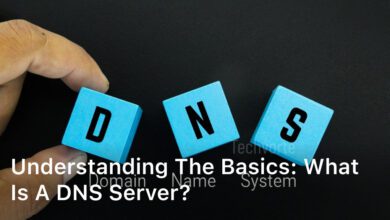Hi, welcome again in Tech Vorte, Imagine a realm where information flows seamlessly, where every digital interaction hinges on a crucial balance between request and response.
This is the essence of the client-server model, a foundational structure that forms the bedrock of our digital universe.
At the zenith of the computing hierarchy, the server computer reigns supreme, driving the very pulse of the internet and empowering the digital landscape with unparalleled efficiency and control.
Join us as we venture into the world of computers, mapping out the intricate relationship between the machines that serve and those that solicit their vast resources.
Understanding the Client-Server Model
The digital world operates on a framework that shapes how information is exchanged and processed.
At the heart of this architecture lies the client-server model, which orchestrates interaction between millions of computing devices.
Every time you check your email, stream a video or update a social media profile, you’re participating in client-server computing.
This model has revolutionized the way computer systems interact, making it a crucial element of modern connectivity.
The Basic Principles of Client-Server Computing
Client-server computing can be likened to a day-to-day conversation—you ask a question and you receive an answer.
In this dialogue, the client sends a request to the server, which then processes the information and sends back a response.
The efficiency and ubiquity of this process allow for expansive networks that form the foundation of internet communication.
Key Players: The Client Side
On the client side of the equation, we encounter a diverse array of devices that users interact with daily.
Desktop computers, laptops, smartphones and tablets are all classified as clients.
These devices cater to the end-user, providing a gateway to access services, applications and information.
They are the originators of requests in the grand conversation of client-server computing.
Distinguishing the Server’s Role
Central to the concept is the server’s role, which is characterized by its capacity to manage and fulfill multiple client requests simultaneously.
Servers are dedicated to storing data, executing complex computations and managing the resources necessary to send pertinent responses to clients.
This dynamic ensures a seamless experience for users as they navigate the digital realm.
What is the Server Computer: The Powerhouse of the Internet

The term server computer might evoke images of a complex array of machines humming in a cold room, but in reality, this term denotes a much more pivotal entity in our daily digital activities.
By definition, a server computer is a powerful system designed to handle network resources and provide services to other computers, known as clients.
It is a central component in the client-server model, executing the demanding tasks that keep the wheels of the internet turning.
The server computer’s role extends far beyond mere data storage.
It plays a critical part in managing and maintaining the flow of information across the web.
Whether it’s hosting a website, running a large database or processing countless email transactions, servers bear the brunt of the workload in the digital environment, silently ensuring that the user’s experience across the internet remains smooth and efficient.
This sturdy foundation is what earns them the title of an internet powerhouse.
As an internet powerhouse, server computers are not only responsible for storing vast masses of data, but they also assure that this data is accessible to users when needed.
They are the unsung heroes managing network traffic, providing security, and enabling the use of complex web applications.
This seamless orchestration of tasks by server computers is essential for both the operation of the internet and the countless businesses and industries that rely on stable and swift digital communication.
Server Computer Function and Usage
As the digital era evolves, the significance of server computers in sustaining the technologically driven world has never been more pronounced.
These robust machines facilitate a multitude of server computer functions, manage intricate data stores and ensure security and efficiency in numerous server computer industries.
Let’s delve into the complexities and utilities that characterize server computers.
Core Functions of a Server Computer
The heart of a server computer’s prowess lies in its ability to perform critical operations seamlessly.
Its primary server computer functions encompass the vital aspects of data storage and data management, which ensure that vast amounts of information are kept secure and accessible.
Additionally, server computers are tasked with maintaining high levels of network security, protecting sensitive information from malicious threats.
Network management, another crucial function, allows for the smooth operation of communication channels, reinforcing the server computer’s role as an indispensable component in the computing hierarchy.
How Server Computers Serve Different Industries
Across various verticals, the server computer usage extends to tailor-fitted solutions that address industry specific needs.
In the e-commerce realm, they process transactions and safeguard user data.
Healthcare industries depend on servers for storing and managing electronic medical records with precision and confidentiality.
Finance sectors employ these powerful machines for real-time data analysis and secure financial operations, while educational institutions utilize them for course management and virtual learning environments.
Each domain leverages server computer usage to optimize their unique workflows and information management requirements.
Common Server Usage Scenarios
Illustrating the versatility of server computers, common usage scenarios shed light on their practical applications.
Web hosting, a fundamental service, allows businesses and individuals to establish a digital presence.
Cloud computing has revolutionized data accessibility and storage, offering scalable resources on-demand.
Furthermore, robust database management systems driven by server computers enable coherent data structures, permitting intricate query operations and analytics.
Whether for small start-ups or large corporations, server computers form the backbone of these essential services, facilitating growth and innovation in the tech-driven marketplace.
Diving into Server Computer Features and Benefits
The landscape of modern computing is punctuated by the foundational role of server computers, whose wide array of features empower industries and revolutionize how organizations operate.
One of the chief server computer features is scalability, the ability to grow and adapt to the evolving needs of businesses.
The flexibility to scale resources up or down ensures that server computers can handle fluctuating workloads, which is critical for businesses experiencing growth or handling seasonal spikes in traffic.
When it comes to server computer benefits, reliability stands out as a cornerstone.
Servers are engineered to offer continuous operation, often boasting redundant components that guard against potential failures.
This uninterrupted service is a key advantage, particularly for enterprises that require round-the-clock availability.
Reliability extends to performance as well, server computers are designed for high-performance tasks, making them capable of processing large volumes of data at exceptional speeds, which is essential for data analysis, complex computations and real-time transactions.
Enhanced collaboration is another significant benefit servers provide.
They facilitate a centralized platform where multiple users can work on shared projects or access common databases, streamlining workflows and fostering teamwork.
In a similar vein, efficient resource management emerges as both a feature and a benefit, with the ability to efficiently allocate resources and centralize control translating to cost savings and reduced operational complexity.
Finally, improved data security must be emphasized among server computer benefits.
Servers offer robust security measures to protect sensitive information from unauthorized access and cyber threats.
The combination of advanced encryption, access controls and regular security updates creates a fortified environment for storing and processing critical data, which adds to the peace of mind for both businesses and customers alike.
These server computer features and benefits illustrate why they are not merely components within our digital framework but are indeed pivotal elements that sustain and advance our digital experiences.
As our reliance on technology intensifies, the server’s role will only grow and evolve to meet the new challenges and opportunities that lie ahead.
Conclusion
Throughout this exploration of the client-server model, we have seen how this architectural framework serves as the linchpin holding together our digital edifice.
The server computer emerges not only as a component but as the veritable nerve center of the internet, managing, processing and disseminating data to clients across the globe.
It’s in the quiet hum of these machines that our emails, websites and apps find their origin and eventual path to our screens.
Delving into the realm of server computers reveals a vast expanse where they are much more than mere hardware; they embody the force propelling industries forward.
From managing sensitive healthcare records to executing financial transactions and fostering educational platforms, server computers anchor these essential services with their robust features and unflagging reliability.
In closing, the server computer stands as a testament to human ingenuity in the digital age.
It is through understanding the client-server model that we fully appreciate the seamless delivery of services and information that many take for granted.
As the spine of our internet experience, server computers deliver not just data, but the very convenience and efficiency that define the modern computing landscape.
FAQ
What is a server computer?
A server computer is a powerful computer system that plays a crucial role in delivering data and services to clients over a network. It acts as the backbone of the internet and is responsible for processing client requests, managing data, and facilitating communication.
What functions does a server computer perform?
Server computers perform various important functions, including data storage, data management, security, and network management. They host websites and applications, manage databases, support email services, and provide resources for cloud computing.
What are the different types of server computers?
There are different types of server computers based on their specific functions and usage. Some common types include web servers, file servers, database servers, mail servers, and application servers. Each type serves a specific purpose in facilitating different aspects of network communication.
How are server computers used in different industries?
Server computers play a vital role in various industries. They are used in e-commerce for hosting websites and managing transactions, in healthcare for storing patient records and facilitating communication, in finance for secure data management and processing transactions, and in education for hosting online learning platforms and managing student data.
What are the advantages of using a server computer?
Server computers offer numerous benefits, such as improved data security, efficient resource management, high-performance capabilities, and scalability. They allow businesses to centralize data storage, enhance collaboration, ensure data backup and recovery, and provide reliable access to applications and services.





